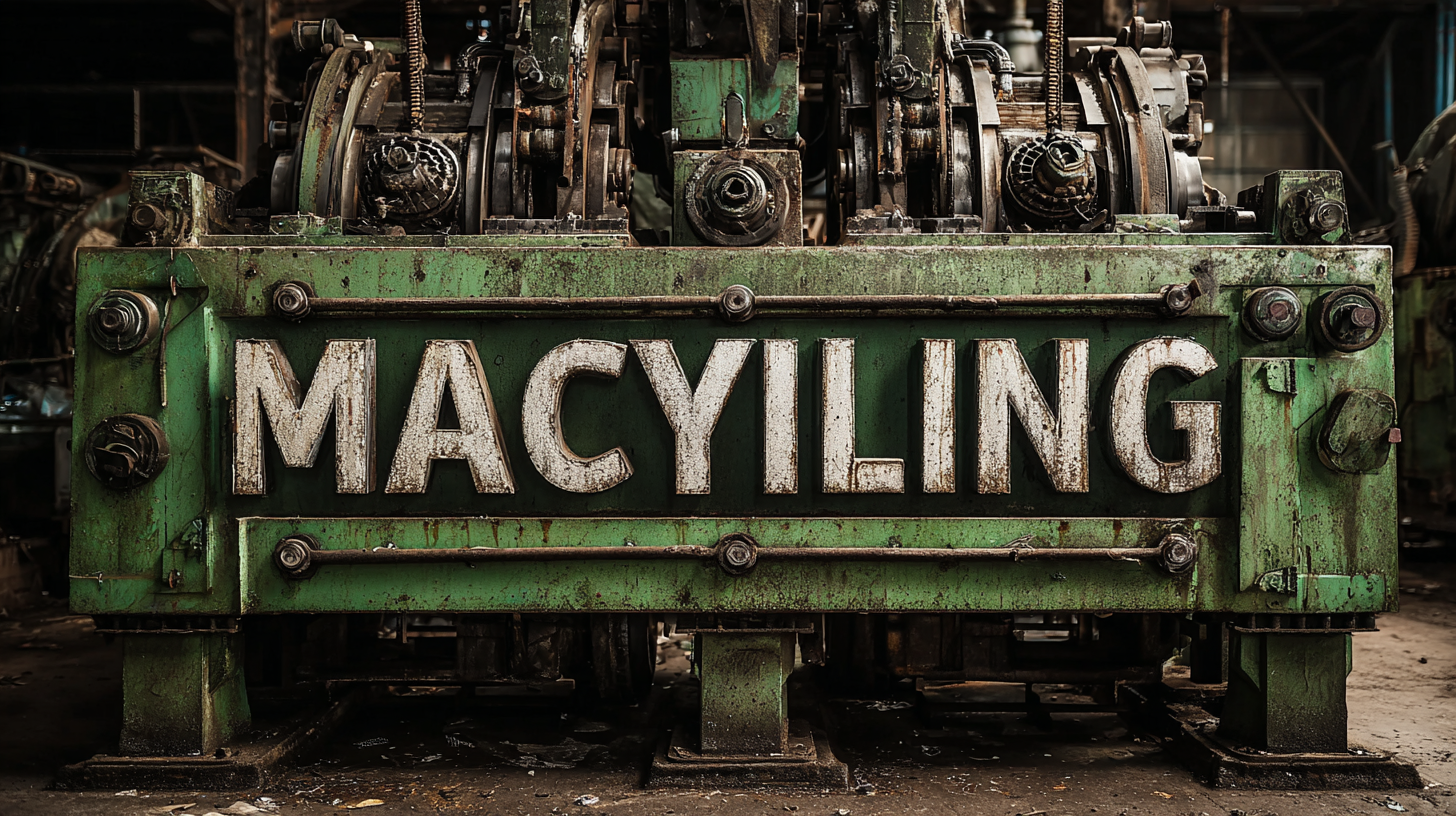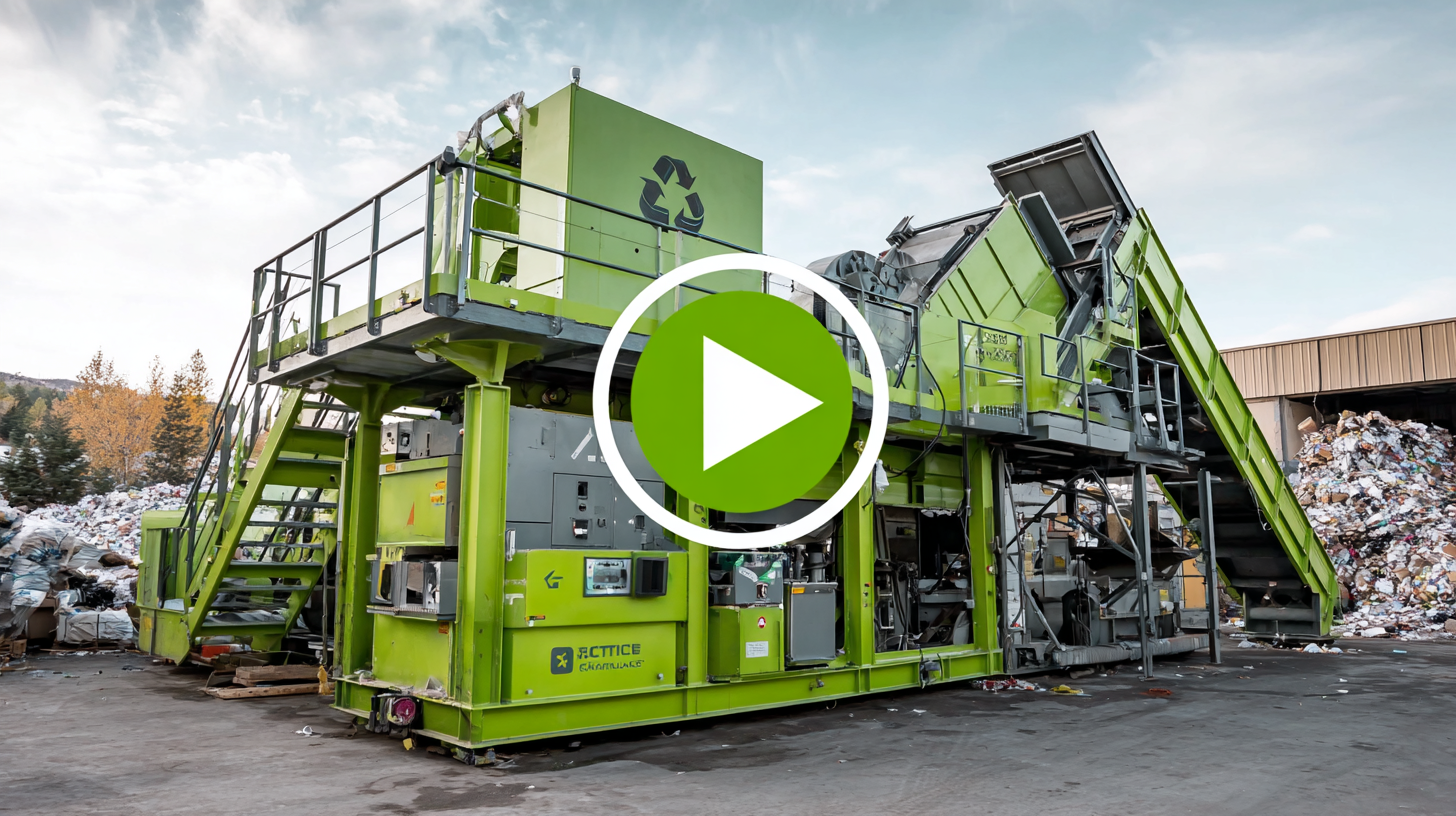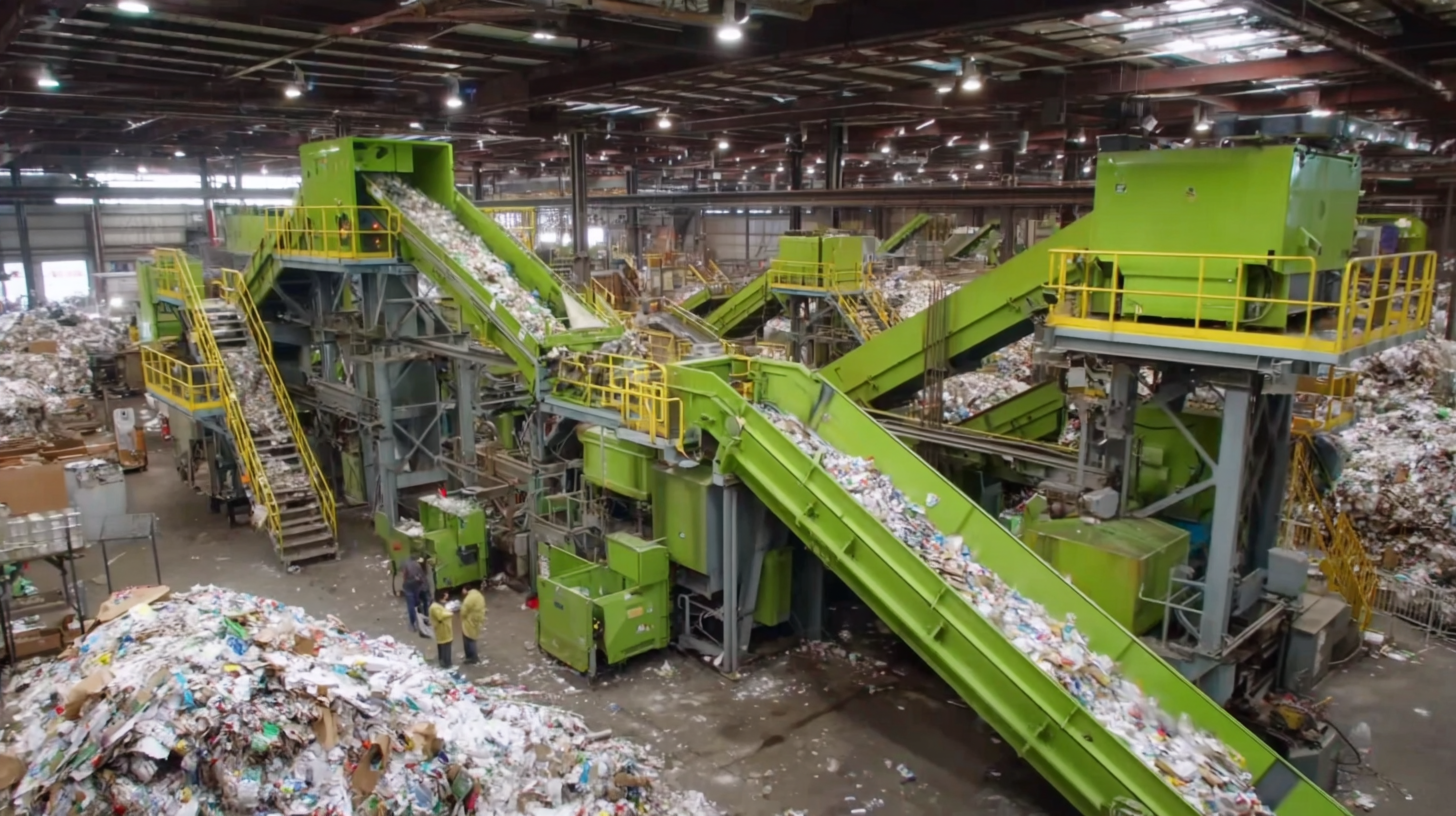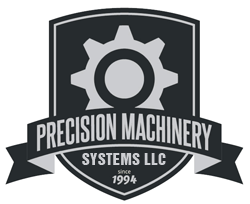Future Innovations in Best Recycling Machinery: Trends to Watch in 2025
As we move closer to 2025, the importance of recycling machinery is becoming increasingly pronounced amid growing environmental concerns and the need for sustainable practices. According to the Global Recycling Market Report, the recycling industry is projected to reach a value of $600 billion by 2025, highlighting the critical role that advanced recycling machinery plays in achieving this growth.  Innovations in technology—from automated sorting systems to AI-driven processing equipment—are set to revolutionize how materials are reclaimed and repurposed. Additionally, the increasing demand for recycled materials across various sectors is driving investment in cutting-edge machinery designed for efficiency and effectiveness. In this ultimate guide, we will explore the key trends and innovations in recycling machinery that are anticipated to shape the industry landscape, ensuring a greener future for generations to come.
Innovations in technology—from automated sorting systems to AI-driven processing equipment—are set to revolutionize how materials are reclaimed and repurposed. Additionally, the increasing demand for recycled materials across various sectors is driving investment in cutting-edge machinery designed for efficiency and effectiveness. In this ultimate guide, we will explore the key trends and innovations in recycling machinery that are anticipated to shape the industry landscape, ensuring a greener future for generations to come.
Key Technologies Reshaping Recycling Machinery in 2025
As we look toward 2025, several key technologies are set to reshape the recycling machinery industry. One notable advancement is the rise of enzymatic recycling methods, which promise more efficient breakdown of plastics. Recent collaborations among research institutions have developed a road map for economically viable enzyme-based processes, enhancing our ability to recycle materials that have long been deemed non-recyclable. Moreover, the plastic recycling market in Saudi Arabia is booming, driven by robust government policies and a growing demand in packaging and consumer goods sectors.
The commercial laundry machinery market is also witnessing rapid growth, projected to reach $10.4 billion by 2030. Innovations in Internet of Things (IoT) applications and energy-efficient designs are expected to propel this expansion, indicating a broader trend toward technology integration in recycling practices. Additionally, the global tire recycling market is on track to grow significantly, with a valuation projected to rise from $10.1 billion in 2025 to nearly $18 billion by 2033.
**Tips:** Consider investing in recycling machinery that incorporates smart technology to enhance operational efficiency. Staying informed about regulatory policies can provide a competitive edge as the recycling sector evolves. Ensure your systems are adaptable to new innovations, such as enzymatic processes, to remain relevant in the marketplace.
Future Innovations in Recycling Machinery: Key Technologies Reshaping the Industry in 2025
This chart displays projected advancements in recycling machinery technologies by 2025, highlighting key trends that are set to enhance efficiency and sustainability within the industry.
Sustainable Materials: The Future of Recycling Equipment Design
As we move towards a more sustainable future, the design of recycling equipment is undergoing significant transformation. The focus is shifting to incorporating sustainable materials, which not only enhances the efficiency of recycling machinery but also reduces environmental impact. By using recycled plastics, biocomposites, and other eco-friendly materials, manufacturers can create machines that are lighter, more durable, and easier to maintain. This shift is crucial, as the world increasingly demands equipment that aligns with eco-conscious practices.
Tip: When considering new recycling machinery, look for models that utilize sustainable materials. This not only contributes to environmental goals but can also improve operational efficiency over time.
Additionally, smart technologies are becoming a staple in the design of recycling equipment. These advancements allow for greater automation and real-time data analytics, which enhance the sorting process and improve the overall effectiveness of recycling systems. By integrating sensors and AI capabilities, machinery can adapt to varying materials and optimize the recycling stream.
Tip: Keep an eye out for recycling machinery that features smart technology integrations. These innovations not only streamline operations but also help in maximizing the recovery of valuable materials, ultimately benefiting both your business and the planet.
Automation and AI: Enhancing Efficiency in Recycling Processes
The recycling industry is on the brink of a technological revolution, with automation and artificial intelligence (AI) leading the charge toward enhanced efficiency in recycling processes. As we look ahead to 2025, these innovations promise to streamline operations, reduce labor costs, and improve the quality of recycled materials.
 Automation technologies, such as robotic sorting systems, are becoming increasingly sophisticated, capable of identifying and separating various types of recyclables with remarkable precision. This not only minimizes human error but also accelerates the sorting process, ensuring that more materials are diverted from landfills.
Automation technologies, such as robotic sorting systems, are becoming increasingly sophisticated, capable of identifying and separating various types of recyclables with remarkable precision. This not only minimizes human error but also accelerates the sorting process, ensuring that more materials are diverted from landfills.
AI plays a pivotal role in optimizing recycling facilities by analyzing vast amounts of data to predict trends and operational needs. Machine learning algorithms can refine sorting processes based on real-time feedback, allowing recycling plants to adapt quickly to changing material streams. Furthermore, AI can enhance logistics and resource management, helping facilities operate at peak efficiency. As these technologies continue to evolve, they will not only transform how we recycle but also encourage greater participation from communities, ultimately contributing to a more sustainable future.
Emerging Trends in Waste Sorting Technology for Better Recycling
As we look ahead to 2025, one of the most significant advancements in recycling will stem from innovations in waste sorting technology. A recent report from the Ellen MacArthur Foundation highlights that improving sorting efficiency can potentially increase recycling rates by up to 30%. This shift is crucial, especially considering that nearly 30% of plastic waste is currently mismanaged. Emerging technologies such as artificial intelligence (AI) and machine learning are at the forefront of this transformation. AI-powered sorting machines can identify materials faster and with greater accuracy, minimizing human error and enhancing the quality of recycled materials.

In addition, sensor-based sorting technologies are gaining traction, providing real-time data analytics that optimize the recycling processes. According to a market analysis by Grand View Research, the global waste sorting market is expected to reach $1.4 billion by 2025, driven by these technological advancements. Innovations like near-infrared (NIR) sorting systems are enabling facilities to separate materials at an unprecedented scale, allowing for a more efficient recycling workflow. As these trends evolve, the integration of advanced waste sorting technology will play a pivotal role in promoting sustainable practices and ensuring a circular economy for future generations.
Innovative Business Models for Recycling Machinery Investment in 2025
In 2025, the landscape of recycling machinery investment will witness transformative changes driven by innovative business models. As sustainability becomes a core focus for companies, many are shifting towards a circular economy. This approach not only maximizes the value derived from materials but also minimizes waste. Key players in the recycling industry are now exploring partnerships and collaborations to streamline operations and enhance efficiency in resource recovery.
**Tip**: Consider adopting a subscription-based model for machinery leasing. This approach allows businesses to remain adaptable and reduces the upfront financial burden of purchasing expensive technologies.
Moreover, advancements in technology, such as AI and IoT, will enable real-time monitoring and data analytics in recycling operations. Investing in machinery that incorporates these technologies will not only improve operational effectiveness but also provide valuable insights for better decision-making.
**Tip**: Leverage data analytics to forecast recycling needs and optimize machinery usage. This proactive strategy ensures companies stay ahead of market demands while reducing operational costs.
